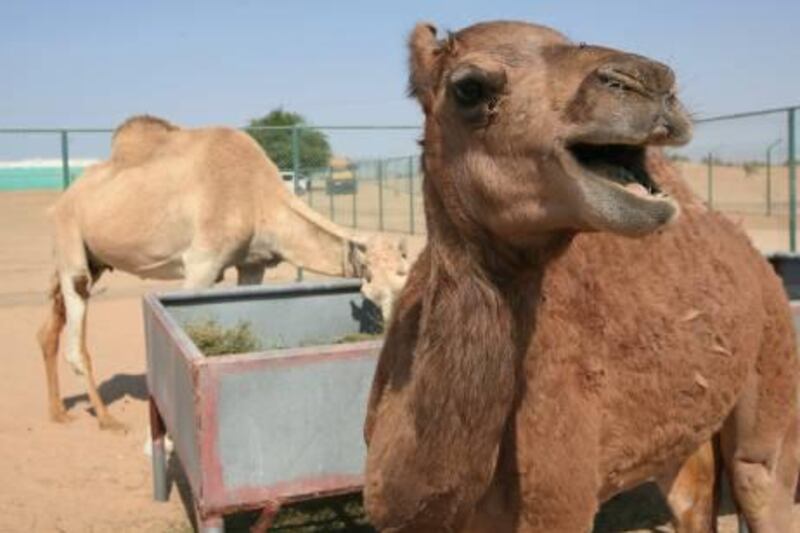DUBAI // Scientists in Dubai have taken the first steps towards creating a genetically modified camel that makes human proteins.
The Camel Reproduction Centre is working to produce cell lines that carry artificially introduced human genes.
The end product, they hope, will be a camel containing those human genes, which can be used as an easy source of medical products such as insulin.
Further down the line, the technology could even be used to grow organs suitable for transplantation into humans.
Transgenic cloning involves transferring genes from one species into another. Genes store the information that regulates how the body is formed and functions. Changing them can change the characteristics of an animal.
"In the near future, the world's demands for human pharmaceutical proteins may be met by transgenic farm animals," said Dr Nisar Wani, the head of the reproductive biology laboratory at the centre.
He said camels could play an important role in producing pharmaceutical proteins used for the treatment of thousands of genetic diseases, as well as emphysema, obesity and diabetes.
"Diseases are shown by their lack of the genetic code to produce such a protein," he said. "Since the genetic code of humans is known, it's possible to inject the needed genes into animals, who can express that gene in their milk."
The proteins can be extracted from camel blood or milk and then purified and sold. There may also be a role for camels to be genetically manipulated to exhibit disease symptoms so that effective treatment can be studied.
Researchers in the US have already developed genetically modified cows to produce proteins in their milk.
But Dr Wani believes camels may have a commercial advantage over cows. "Camels are incredibly disease resistant and have an amazing adaptability," he said.
Though the technology is years away from being a reality, he believes that the Arab world is "in a unique position for developing biotechnology".
Much of the hard research is already done. The centre successfully produced its first cloned camel, named Injaz, in 2009, and Saudi researchers managed to sequence the camel genome in June last year.
While only a single sequence of camel genome has been mapped, the human genome has been known and studied for almost a decade. It is a matter of taking desired traits from human DNA and putting it into camels.
Once they have a viable culture of camel cells that contain the right bits of human DNA, the next step for the scientists will be transferring those cells into developing embryos and bringing them to term.
"It could be a huge industry," said Dr Wani. "The money is here, the camel is here and so it [development] should be here in the United Arab Emirates."
The use of modified animals, however, remains contentious. The US Food and Drug Administration is reviewing the AquAdvantage salmon, an Atlantic salmon with a cold-resistant gene taken from a ray-finned fish and a growth gene taken from Chinook salmon.
The engineered salmon grow twice as fast as typical Atlantic salmon and would, if passed, be the first genetically engineered animal approved for human consumption.
In 2008, the FDA said it would allow meat and milk from cloned cow, pigs and goats, ruling that there were no significant differences between those products and others that were conventionally produced.
But the European Union has been more hesitant about the use of animal clones and their products. Two years ago it put a temporary, five-year ban on animal cloning for food.
UAE officials have previously mirrored the US position in regard to GM foods, making the country likely to be friendly to the idea of becoming a biotechnology leader.
Whether or not it welcomes giant, genetically altered salmon fillets remains to be seen.






